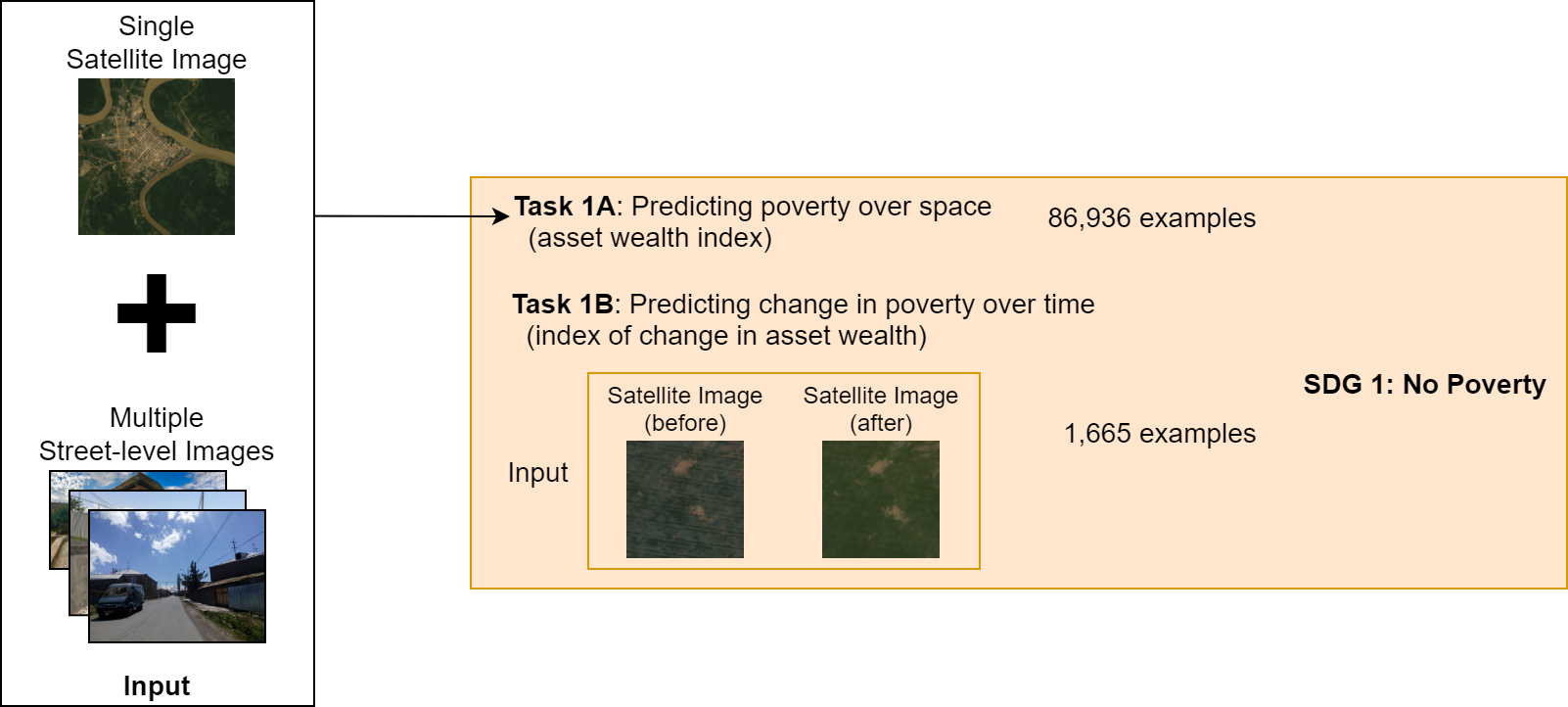SDG 1: No Poverty
Despite decades of declining poverty rates, an estimated 8.4% of the global population remains in extreme poverty as of 2019, and progress has slowed in recent years [1]. But data on poverty remain surprisingly sparse, hampering efforts at monitoring local progress, targeting aid to those who need it, and evaluating the effectiveness of antipoverty programs [2]. Previous works [3,4] have demonstrated using computer vision on satellite images and street-level images to predict economic livelihood, and SustainBench provides standardized datasets for evaluating such models.
The SustainBench datasets for SDG 1 are summarized below.

References
[1] United Nations Department of Economic and Social Affairs. The Sustainable Development Goals Report 2021. The Sustainable Development Goals Report. United Nations, 2021 edition, 2021. ISBN 978-92-1-005608-3. doi: 10.18356/9789210056083. URL https://www.un-ilibrary.org/content/books/9789210056083.
[3] M. Burke, A. Driscoll, D. B. Lobell, and S. Ermon. Using satellite imagery to understand and promote sustainable development. Science, 371(6535), 2021. doi: 10.1126/science.448abe8628. URL https://www.science.org/doi/10.1126/science.abe8628.
[3] C. Yeh, A. Perez, A. Driscoll, G. Azzari, Z. Tang, D. Lobell, S. Ermon, and M. Burke. Using publicly available satellite imagery and deep learning to understand economic well-being in Africa. Nature Communications, 11(1), 5 2020. ISSN 2041-1723. doi: 10.1038/s41467-020-58916185-w. URL https://www.nature.com/articles/s41467-020-16185-w.
[4] J. Lee, D. Grosz, B. Uzkent, S. Zeng, M. Burke, D. Lobell, and S. Ermon. Predicting Livelihood Indicators from Community-Generated Street-Level Imagery. Proceedings of the AAAI Conference on Artificial Intelligence, 35(1):268–276, 5 2021. ISSN 2374-3468. URL https://ojs.aaai.org/index.php/AAAI/article/view/16101.